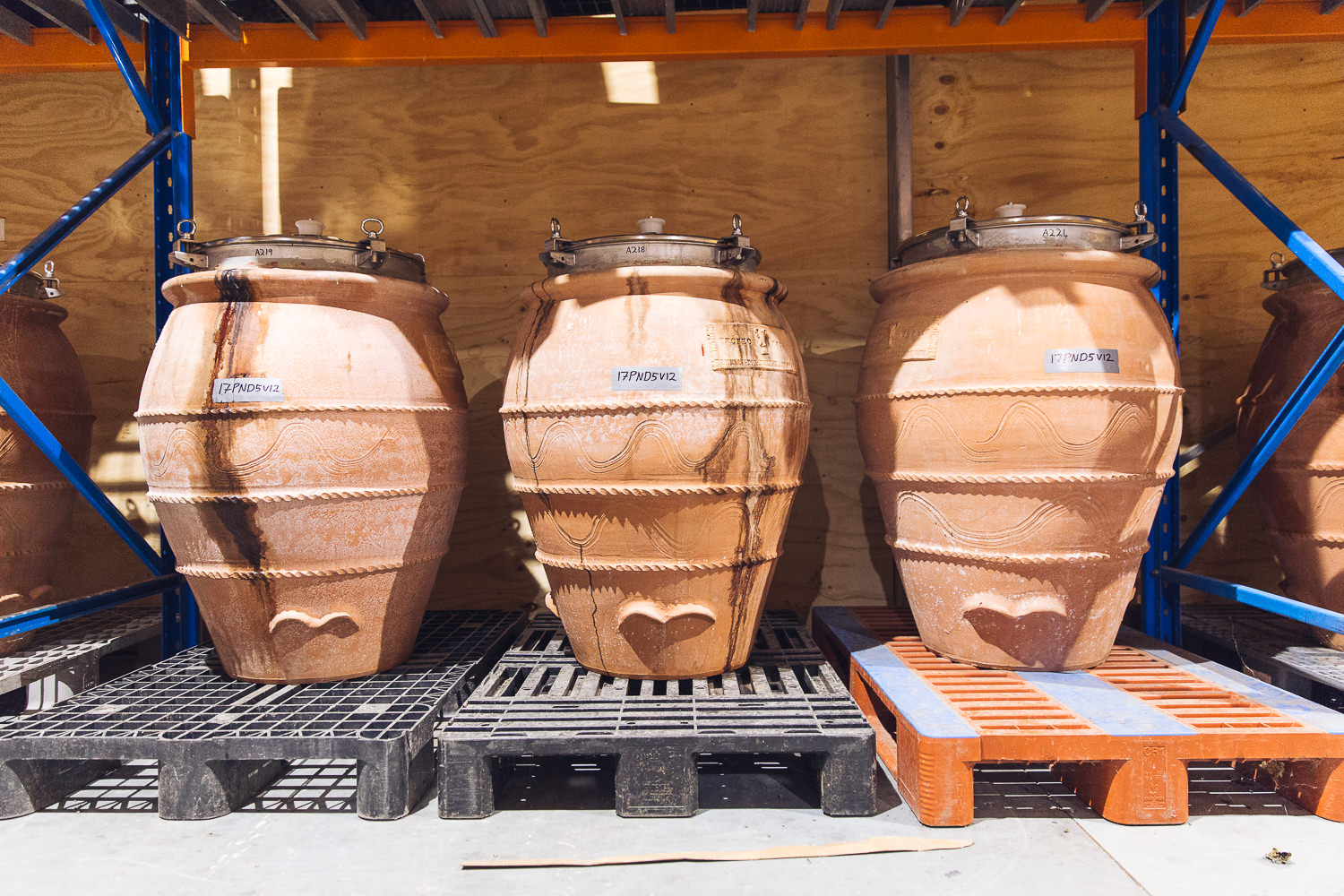
The first wines weren’t made in beautiful barrels or shiny stainless steel tanks. Back then – approximately 6000 years ago – wines were fermented and aged in clay or terracotta vessels known as amphora.
Amphora – from the Greek amphoreus – is a jar with two vertical handles. In antiquity, it was used for storing and transporting wine as well as olive oil and other foodstuffs. But while the use of amphora, ceramic eggs and other similar vessels remained in use in certain countries (such as Georgia), the majority of modern winemakers have traditionally preferred oak.
But recently, that’s started to change. A number of Australian winemakers have begun to experiment with and embrace these ancient winemaking methods. Trofeo Estate, on the Mornington Peninsula, is the largest producer of wine fermented and aged in terracotta in the Southern Hemisphere.
“The only barrels we have onsite are for decoration,” says Lori Smith, Trofeo Estate’s Wine Ambassador. “There’s not one bit of oak involved here. No chips, no powders – just terracotta.”
There are many benefits to fermenting and aging wine in amphora. Some of the benefits include:
- Unlike oak, terracotta does not impart any flavour, so the resulting wines display all of the grape’s delicate fruit aromatics and flavours.
- Unlike stainless steel, terracotta ‘breathes’, allowing oxygen into the wine which helps develop complex weight, texture and mouthfeel.
- Less sulphur dioxide needs to be added to preserve the wine – as terracotta is an inorganic medium, it doesn’t harbor spoilage microorganisms.
- Terracotta is temperature and humidity sensitive, allowing greater control of the maturation processes.
“It makes these really lovely, elegant wines that are really representative of the cool climate [on the Mornington Peninsula],” says Smith. But there are challenges, too. “Each amphora behaves completely differently,” she adds. “They’re meant to all be the same shape and size but when you start going from one to the other you realise that none of them are the same shape or size. So even if you’ve got the same grapes that have been picked at the same time, have come out of the same crush, and been fermented the same way and then put into here for maturation, each two pots taste different.
“Barrels have a lot of diversity as well, but you wouldn’t think there’d be that much difference with the amphora, especially because ours are made from the one material from the one site (they’re all made by a company called Artenova in Impruneta in Italy), but there is.
“It’s pretty cool,” she says, even though you can never be sure what you’re going to get.



